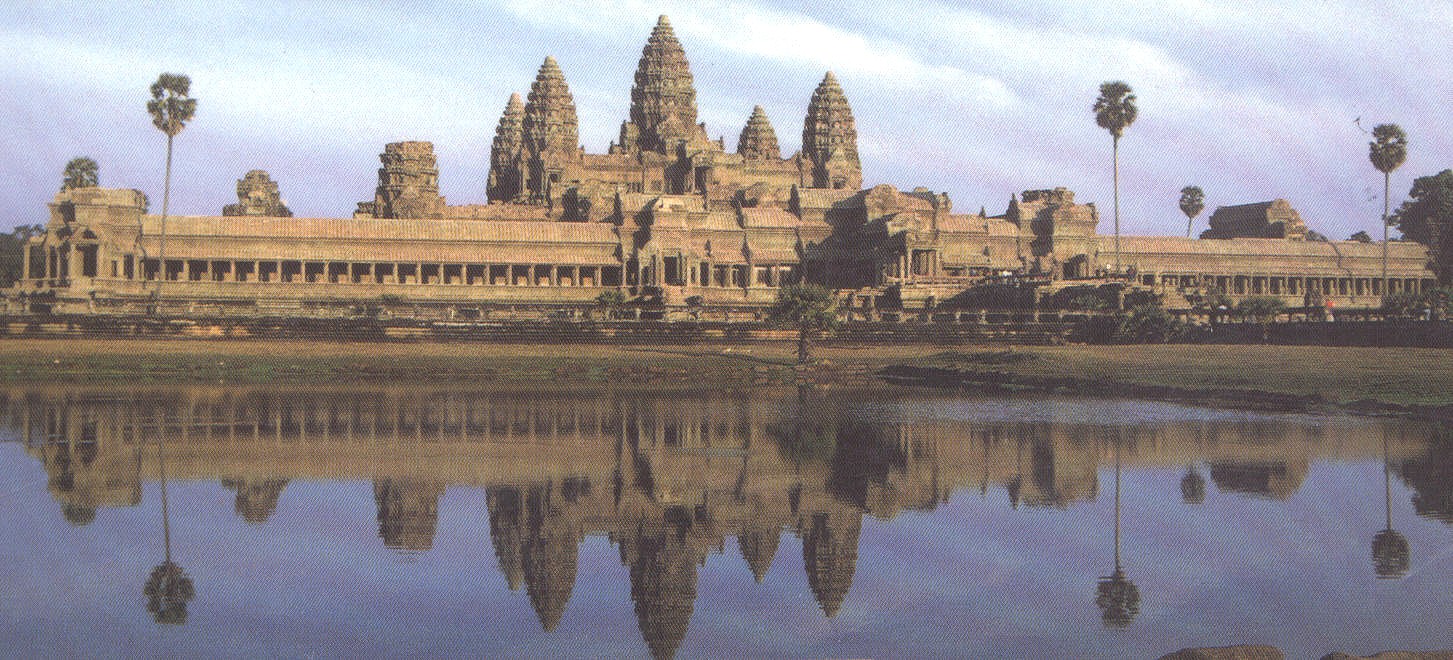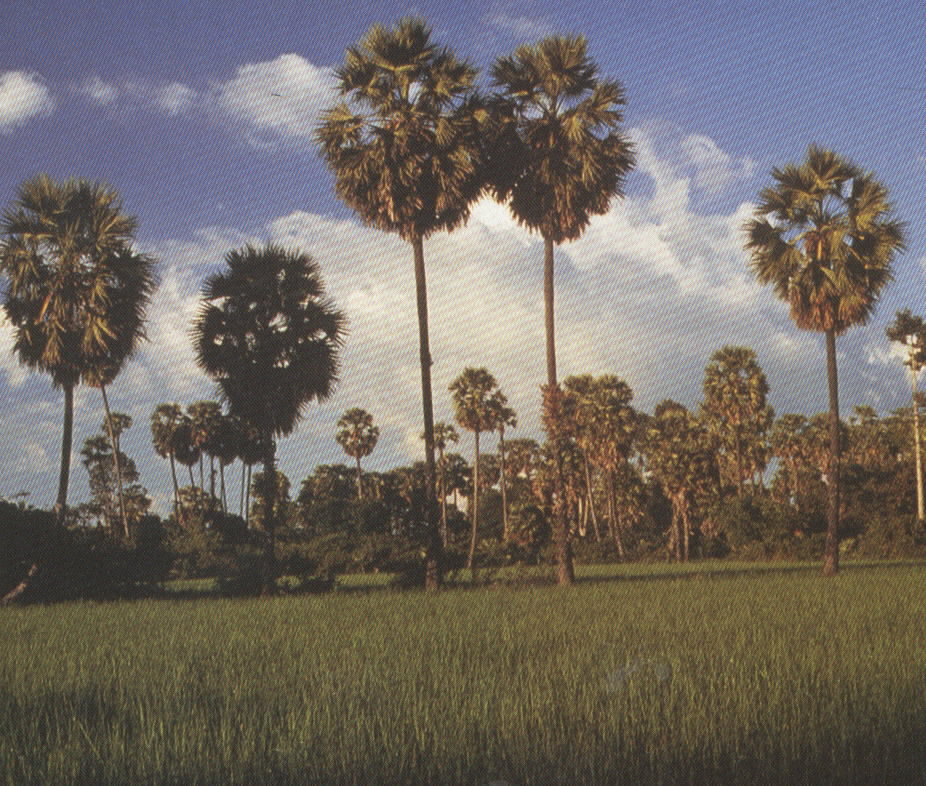 |
||||||||
|
Rice paddy with sugar palms in the background is a typical Cambodian landscape. |
| |||||||
 |
| Angkor Wat, the gem of Cambodia. . Photo courtesy of Sophear Ung |
Angkor Wat was built at the height of Cambodian political power in the late 8th century by King Jayavarman II (802-834), a fervent follower of Hinduism, he dedicated the temple to the god Vishnu.
The temples were designed to represent Mount Meru, the dwelling place of the Hindu gods. Tremendous efforts were made to build Angkor Wat, tons of stone had to be brought over long distances, usually on rafts. Thousands of laborers toiled for years to pile the stones on top of another and artisans patiently carved bas-relief statues of warriors and dancing girls, leaf patterns and intricate floral decorations on the walls.
Click on pictures The name "Angkor" is derived from the Sanskrit word nagara meaning "city", successing kings continued the practice of building temple mountain at the heart of their capital. Angkor Wat is the largest religious building in the world, it measures more than a half mile long on each side. For the next six centuries Cambodian civilization was to dominate mainland Southeast Asia until its decline due to the emergent kingdom of the Thai to the west, who ransacked it in 1431 and Angkor was abandoned.
Angkor Wat remains one of the most important achievement of the Cambodian people for the temple embodies the shared expertise of its builders through architectural tradition.
Visit the Photo Gallery to see more pictures.
Cambodian Folktales created by Ithara Phlong, isphlong@yahoo.com
last modified: December 15, 2000
URL: http://ithara.p.tripod.com/angkor.html









